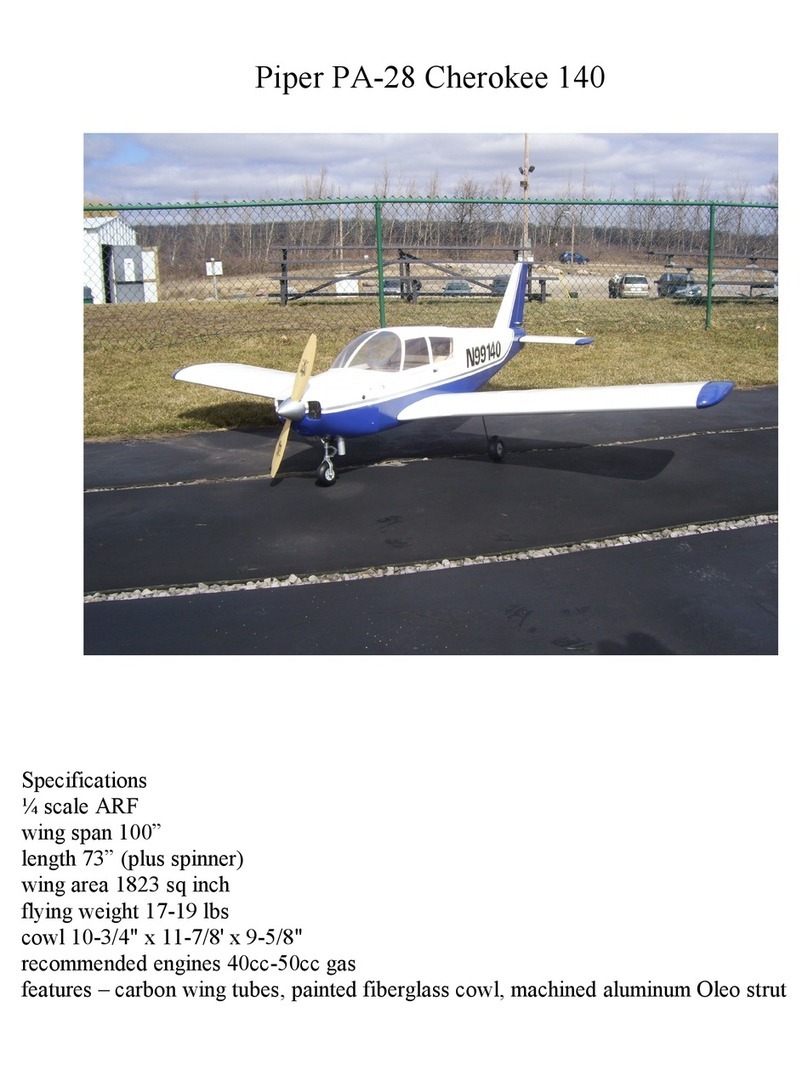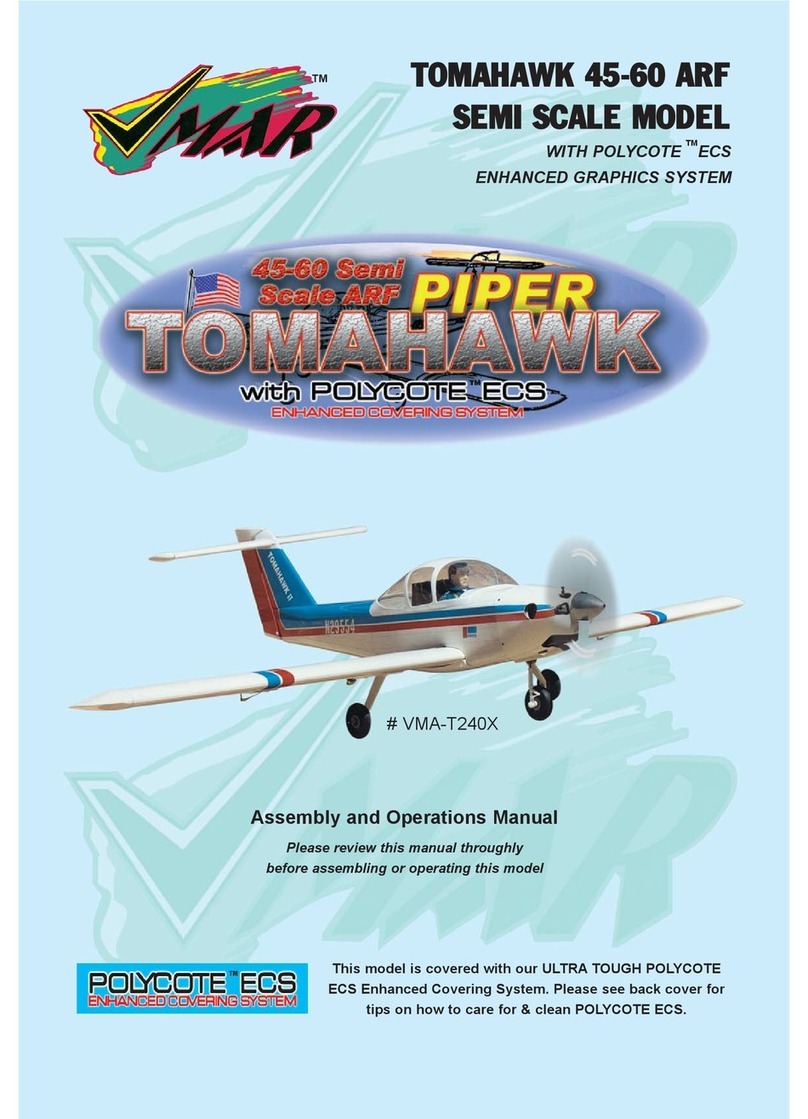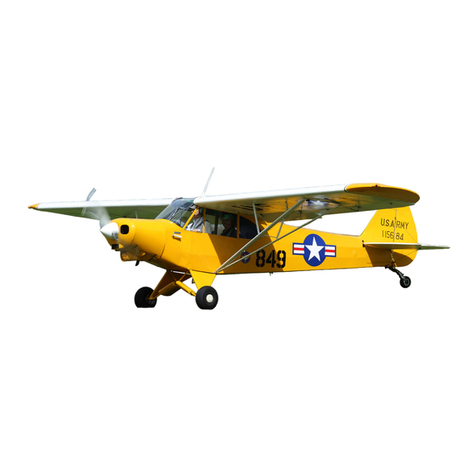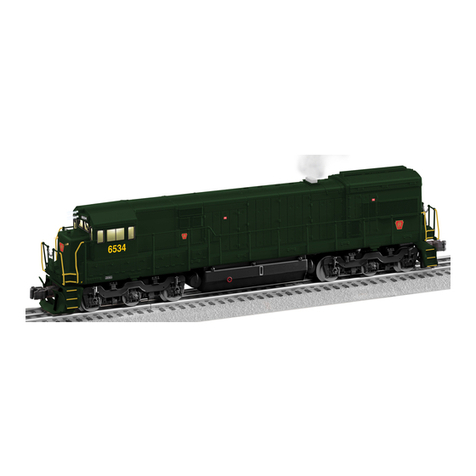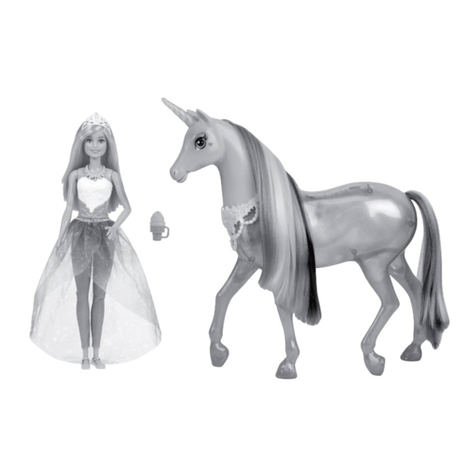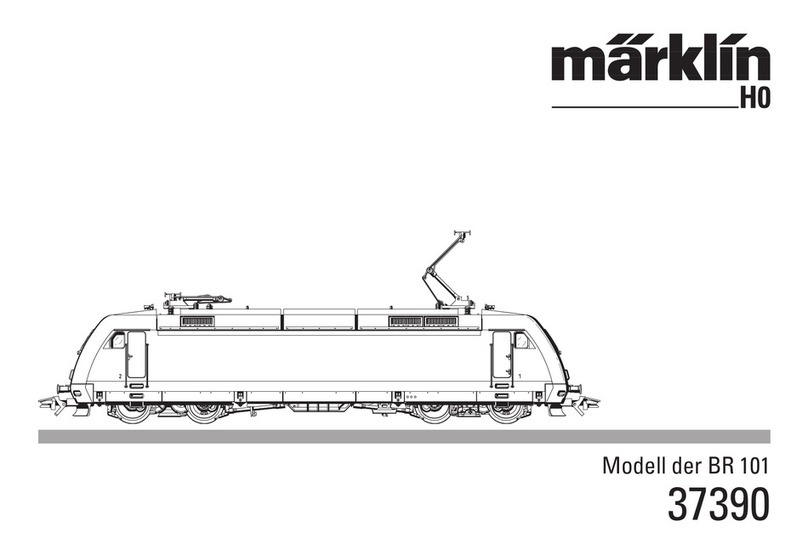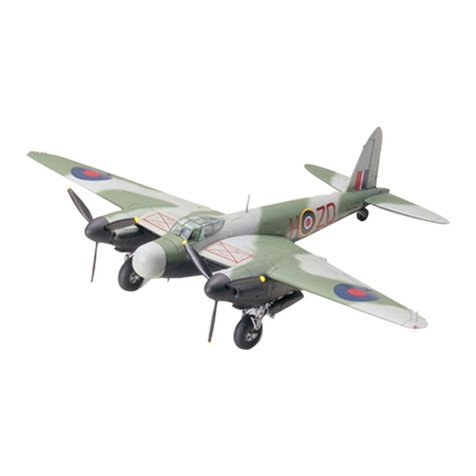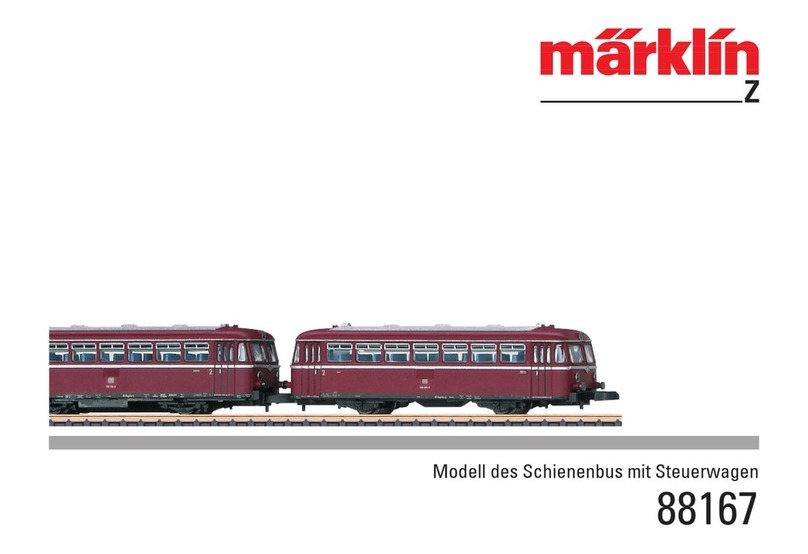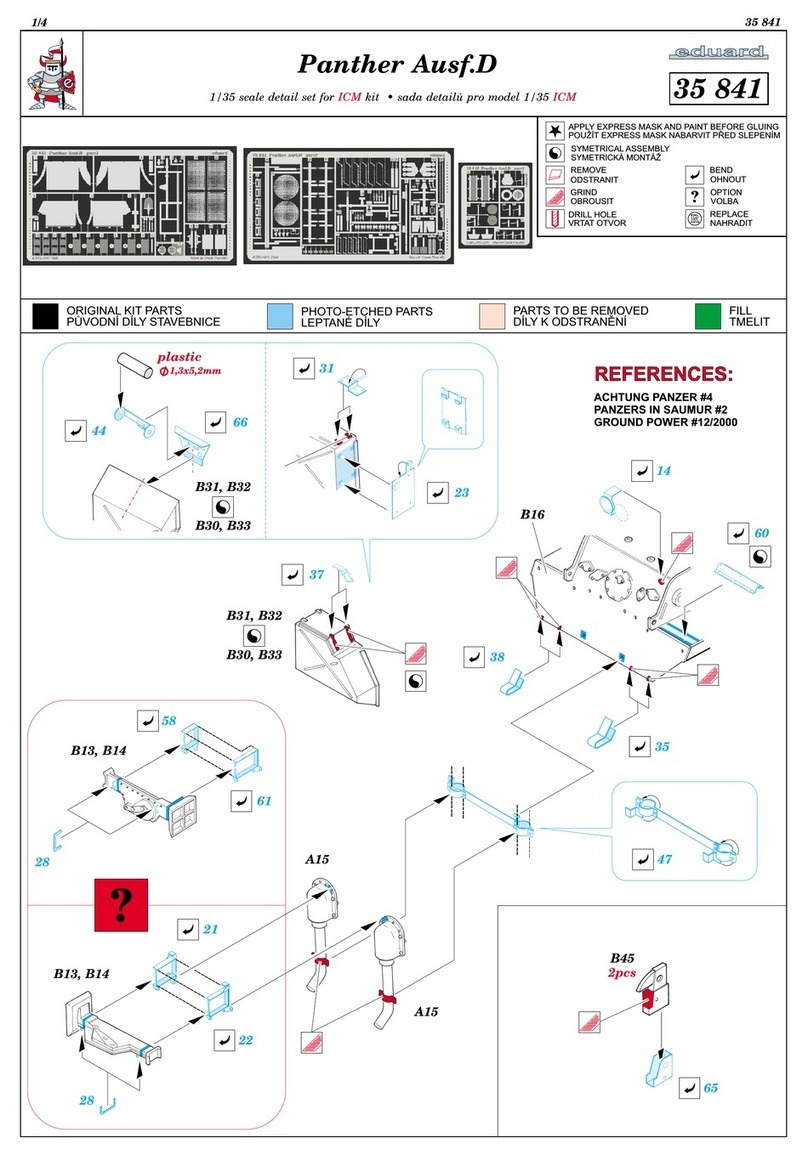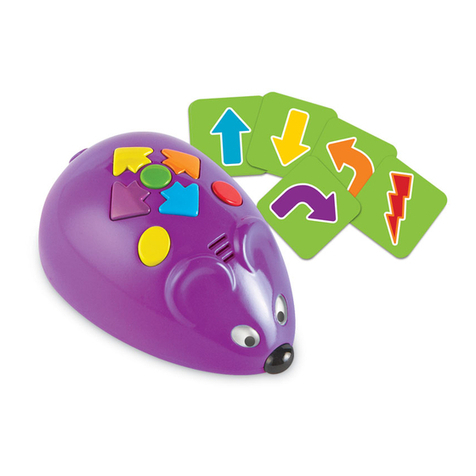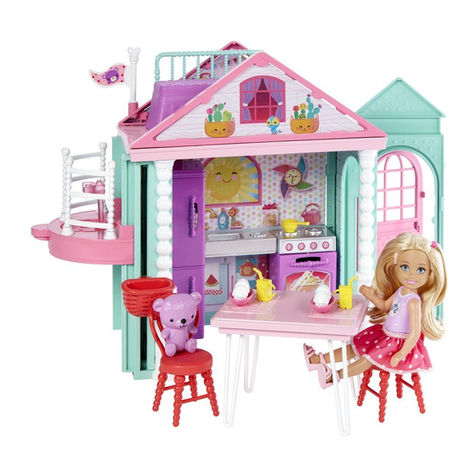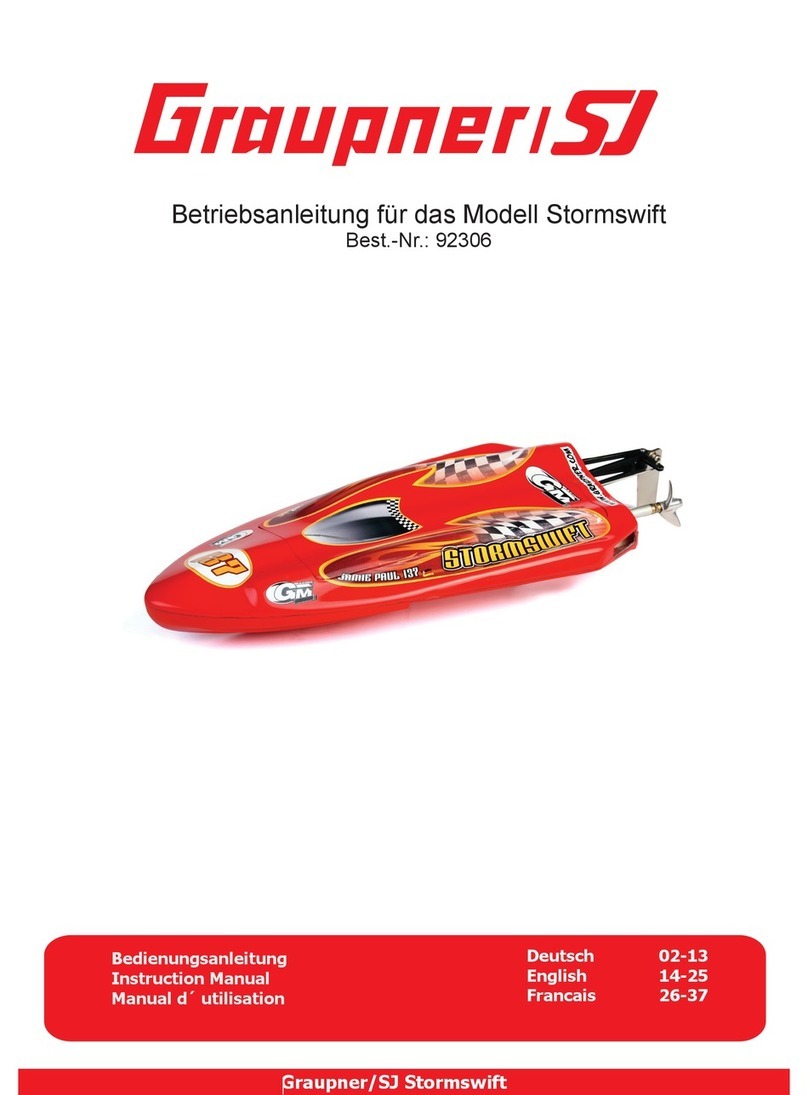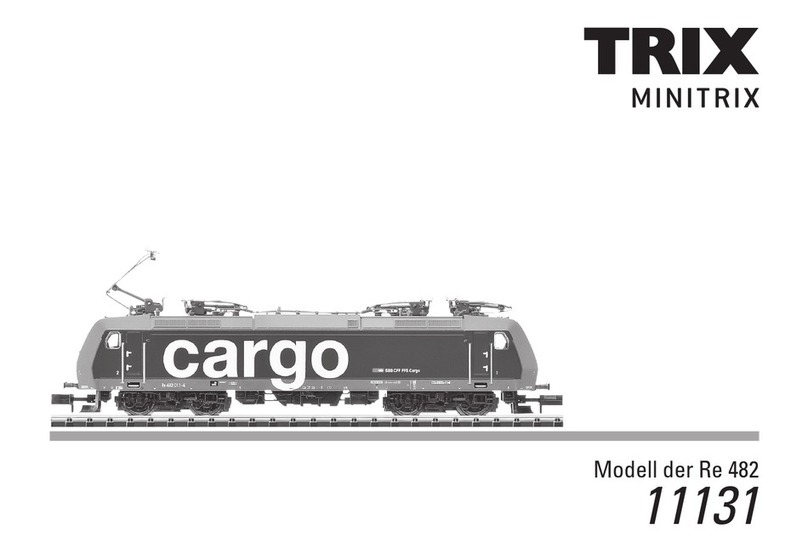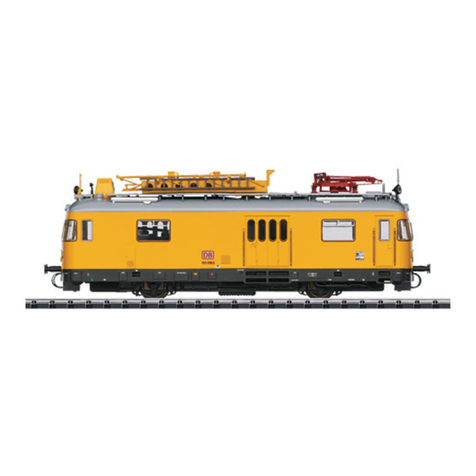Piper MS 74 User manual

MadeinVietnam.
“Graphics and specfications may change without notice”.
Kit features.
• Ready-made—minimalassembly&finishingrequired.
• Ready-coveredcovering.
• Photo-illustratedstep-by-stepAssemblyManual.
Specifications
Wingspan----------------------------------------88.2in----------------------------224cm.
Wing area--------------------------------------- 1137.1 sq.in--------------- 73.4 sq.dm.
Approximate flying weight--------------------9.95- 11 lbs------------------4.5 - 5kg.
Length---------------------------------------------56.2in--------------------------142.7cm.
Recommended engine size---------------- .1.2-1.5 cu.in----------------- 4-stroke.
.91 - 1.2 cu.in----------------2-troske.
Radio System required 4 channels with 6 servos
Flying skill level Intermediate/advanced.
ASSEMBLY MANUAL
MS: 74

PIPER CUB_ CODE SEA 74. Instruction Manual
2
INTRODUCTION.
Thankyou for choosing the PIPER CUB ARTFby SEAGULLMODELS. The PIPER CUB was
designed with the intermediate/advanced sport scale in mind. It is a semi scale airplane which is
easytoflyandquicktoassemble.Theairframeisconventionallybuiltusingbalsa,plywoodtomake
itstrongerthantheaverageARTF,yetthedesignallowstheaeroplanetobekeptlight.Youwillfind
thatmostoftheworkhasbeendoneforyoualready. Themotormounthasbeenfittedandthehinges
are pre-installed . Flying the PIPER CUB is simply a joy.
This instruction manual is designed to help you build a great flying aeroplane. Please read this
manual thoroughly before starting assembly of your PIPER CUB. Use the parts listing below to
identify all parts.
WARNING.
Please be aware that this aeroplane is not a toy and if assembled or used incorrectly it
is capable of causing injury to people or property. WHEN YOU FLY THIS AEROPLANE YOU
ASSUME ALL RISK & RESPONSIBILITY.
If you are inexperienced with basic R/C flight we strongly recommend you contact your R/C
supplierandjoinyourlocalR/CModelFlyingClub.R/CModelFlyingClubsofferavarietyoftraining
proceduresdesignedtohelpthenewpilotonhiswayto successful R/C flight. They will also be able
to advise on any insurance and safety regulations that may apply.
ADDITIONAL ITEMS REQUIRED.
.1.2-1.5 4-stroke engine
.91 - 1.2 cu.in 2-stroke
6 servos
Glow plug to suit engine
Propeller to suit engine
Protective foam rubber for radio
system
Silicone fuel line
TOOLS & SUPPLIES NEEDED.
Thick cyanoacrylate glue
30 minute epoxy
5 minute epoxy
Hand or electric drill
Assorted drill bits
Modellingknife
Straight edge ruler
2mm ball driver
Phillips head screwdriver
220 grit sandpaper
90° square or builder’s triangle
Wire cutters
Masking tape & T-pins
Thread-lock
Paper towels
PARTS LISTING.
FUSELAGE ASSEMBLY
(1) Fuselage
WING ASSEMBLY
(1) Right wing
(1) Left wing
(1) Aluminium dihedral brace
Tail section assembly
(1) Horizontal stabilizer/ elevator
halves.
(1) Rudder halves.
Some more parts.
HARDWAREPACK
COWLING
Landinggear.....

www.seagullmodels.com
3
1) Carefully remove the aileron from one
of the wing panels. Note the position of the
hinges.
2)Remove each hinge from thewing panel
and aileron and place a T-pin in the center of
each hinge. Slide each hinge into the wing
panel until the T-pin is snug against the wing
panel. This will help ensure an equal amount
ofhingeison either side ofthehingelinewhen
the aileron is mounted to the aileron.
3) Slide the wing panel on the aileron until
there is only a slight gap. The hinge is now
centered on the wing panel and aileron.
Remove the T-pins and snug the aileron
against the wing panel.A gap of 1/64” or less
shouldbe maintained betweenthe wing panel
andaileron.
The control surfaces, including the
ailerons, elevators, and rudder, are
prehinged with hinges installed, but the
hinges are not glued in place. It is
imperativethat you properly adhere the
hingesin place per the steps that follow
using a high-quality thin C/A glue.
Note:
4)Deflect the aileron and completely
saturate each hinge with thin C/A glue. The
aileronsfrontsurfaceshould lightly contact the
wing during this procedure. Ideally, when the
hinges are glued in place, a 1/64” gap or less
will be maintained throughout the lengh of the
aileron to the wing panel hinge line.
Note: The hinge is constructed of a special
material that allows the C/A to wick or
penetrateanddistributethroughout the
hinge, securely bonding it to the wood
structureof the wingpanel and aileron.
To avoid scratching your new aero-
plane we suggest that you cover your work-
benchwith an oldtowel. Keepa couple ofjars
orbowlshandytoholdthesmallpartsafteryou
open the bags.
Pleasetrialfitallparts.Makesureyouhavethe
correct parts and that they fit and are aligned
properlybeforegluing!Thiswillensureproper
assembly as the PIPER CUB is made from
natural materials and minor adjustments may
havetobemade. Thepaintandplasticparts
usedinthiskitarefuelproof.However,theyare
not tolerant of many harsh chemicals includ-
ingthefollowing:paintthinner,cyano-acrylate
glueaccelerator,cyanoacrylategluede-bonder
andacetone.Donotletthesechemicalscome
incontactwiththecoloursonthecoveringand
the plastic parts.
NOTE:
HINGING THE AILERONS.
Hinge.
T- pin.
Hinge.
T- pin.
C/Aglue.

PIPER CUB_ CODE SEA 74. Instruction Manual
4
HINGING THE ELEVATOR.
8)After both ailerons are securely hinged,
firmly grasp the wing panel and aileron to
make sure the hinges are securely glued and
cannot be pulled out. Do this by carefully
applying medium pressure, trying to separate
the aileron from the wing panel. Use caution
not to crush the wing structure.
7) Repeat this process with the other wing
panel, securely hinging the aileron in place.
HINGING THE RUDDER.
Glue the elevator hinges in place using the
same tectniques used to hinge the ailerons.
Glue the rudder hinges in place using the
same tectniques used to hinge the ailerons.
TURNBUCKLE INSTALLATION.
Installing the turnbuckle for the wing as
same as pictures below.
Work the aileron up and down several
times to “work in” the hinges and check
for proper movement.
Note:
5) Turn the wing panel over and deflect the
aileron in the opposite direction from the
opposite side. Apply thin C/A glue to each
hinge,makingsure that the C/Apenetratesinto
both the aileron and wing panel.
6) Using C/A remover/debonder and a
papertowel, remove anyexcessC/A glue that
may have accumulated on the wing or in the
aileronhinge area.
Theholelocationofturnbuckles shown in pic-
ture below .
Washer.
washer. Turnbuckle.
Turnbuckle.

www.seagullmodels.com
5
Aileron control horn: See pictures below.
AILERON CONTROLHORN
ELEVATOR CONTROL HORN.
M3LOCK
NUT.
ALUMINUMWASHER.
ALUMINUMWASHER.
CONTRONLHORN
M3 SCREW.
16mm.
Epoxy.
Wing
Epoxy.
Wing
Hinge.
Install the elevator control horn using the
same method as with the aileron control
horns.
2 sets.
3x35mm.
2 sets.
3x40mm.
Aluminum Washer.
16mm.
CONTRONL HORN M3
M3LOCKNUT.
Epoxy.
Epoxy.
Aluminum Washer.
Wing. Aileron.
Horizontal
Stabilizer.
Horizontal
Stabilizer.

PIPER CUB_ CODE SEA 74. Instruction Manual
6
16mm.
See pictures below.Make yourself the
template of your engine on paper.
ENGINE MOUNT INSTALLATION.
Mark and drill 4 holes for engine mount.
Insert 4 blind nuts to firewall.
4x30mm.
Thread locker glue.
Rudder control horn:
Usingthesametectniquesused aileron control
horn. See picture below.
2 sets.
3x35mm.
EPOXY.
Ruddercontrolhorn.
Rudder.
FUSELAGE.
RUDDER CONTROL HORN.
Elevator control horn.
CONTRONL HORN
M3 SCREW.
M3 LOCK NUT.
ALUMINUMWASHER.
EPOXY.
FUSELAGE.
ALUMINUMWASHER.
Rudder.

www.seagullmodels.com
7
2) Usinga modeling knife, cut onelength
ofsiliconfuel line. Connect oneend of theline
tothe weighted fuel pick up andthe other end
to the nylon pick up tube.(The silicon tube is
not included).
3) Carefully bend the second nylon tube
up at a 45º angle. This tube is the vent tube.
1) Using a modeling knife, carefully cut
off the rear portion of one of the 3 nylon tubes
leaving 1/2” protruding from the rear of the
stopper. This will be the fuel pick up tube.
INSTALLING THE STOPPER ASSEMBLY.
4) Test fit the stopper assembly into the
tank. It may be necessary to remove some of
the flashing around the tank opening using a
modeling knife. If flashing is present, make
sure none falls into the tank.
5) With the stopper assembly in place,
the weighted pick-up should rest away from
therear of the tank and move freely inside the
tank. The top of the vent tube should rest just
below the top of the tank. It should not touch
the top of the tank.
Important: When the stopper assembly is in-
stalled in the tank, the top of the vent tube
should rest just below the top surface of the
tank. It should not touch the top of the tank.
Carefully use a lighter or heat gun to
permenently set the angle of the vent tube.
6) When satisfied with the alignment of
the stopper assembly tighten the 3 x 20mm
machine screw until the rubber stopper ex-
pands and seals the tank opening. Do not
overtighten the assembly as this could cause
the tank to split.
FUEL TANK INSTALLATION.
You should mark which tube is the vent
and which is the fuel pickup when you
attach fuel tubing to the tubes in the stopper.
Once the tank is installed inside the fuselage,
it may be difficult to determine which is which.
Venttube. Fuel pick up tube.
Fuel fill tube.

PIPER CUB_ CODE SEA 74. Instruction Manual
8
1) Assemble and mounting the wheel as
shown in the following pictures.
2) Follow diagram below for wheel
installation:
Blow through one of the lines to ensure
thefuel lines have not become kinked in-
side the fuel tank compartment. Air should
flowthrough easily.
Fuel pick-up tube.
Fuelfill tube.
Venttube.
Rubber band.
Fueltank.
WHEEL INSTALLATION.
Landinggear.
Wheel.
Wheel collar.
Wheel collar.

www.seagullmodels.com
9
3) A drop of C/A glue on the wheel collar
screws will help keep them from coming lose
duringoperation.
Repeat the process for the other wheel.
INSTALLING THE LANDING GEAR
1.5mm diameter.
1.5mm diametter.
3x10mm.
4) Remove the engine. Using an drill bit,
drill the mounting holes through the engine
mount at the four locations marked.
2) Place your engine onto the engine
mount. Adjust the engine is centered of the
edges of the engine case.
3) When you are satisfied with the align-
ment, mark the locations of the engine
mounting.
1) Install the pushrod housing through the
predrilledholein the firewallandintothe servo
compartment. The pushrod housing should
protrude 1/4" out past the front of the firewall.
Makea Z-Bend 1/4"fromone end oftheplain
wire pushrod.
MOUNTING THE ENGINE.
Wheel
Fairing.

PIPER CUB_ CODE SEA 74. Instruction Manual
10
COWLING INSTALLATION.
1) Slide the fiberglass cowl over the en-
gineandline up thebackedge of the cowlwith
themarks you made on thefuselage thentrim
and cut.
6) AttachtheZ-Bend inthepushrod wire to
the throttle arm on the carburetor.
5) Bolttheenginetotheengine mountusing
the four machine screws. Double check that
all the screws are tight before proceeding.
MachineScrew 4x30mm.
Trim and cut.
Trim and cut.
Trim and cut.
Trim and cut.
MachineScrew 4x30mm.
Pushrodwire.
4.2 mm diameter.
155mm
.

www.seagullmodels.com
11
2) While keeping the back edge of the
cowl flush with the marks, align the front of
thecowlwiththecrankshaftoftheengine. The
front of the cowl should be positioned so the
crankshaft is in nearly the middle of the cowl
opening.Usethespinnerbackplate as a guide.
Hold the cowl firmly in place using pieces of
masking tape.
3) Installthemufflerandmufflerextension
onto the engine and make the cut out in the
cowl for muffler clearance. Connect the fuel
and pressure lines to the carburetor, muffler
and fuel filler valve. Secure the cowl to fuse-
lage using the 3x10mm screws (4).
Becauseof the sizeof the cowl,itmay benec-
essaryto use a needle valveextension forthe
highspeedneedle valve. Make thisoutof suf-
ficient length 1.5mm wire and install it into the
end of the needle valve. Secure the wire in
placeby tightening theset screwin the sideof
the needle valve.
MachineScrew 3x10mm.
1.5mmwere
(needlevalve).
INSTALLING THE SWITCH.
Installthe switch intotheprecut hole inthe
side of fuselage.

PIPER CUB_ CODE SEA 74. Instruction Manual
12
THROTTLE SERVO ARM INSTALLATION. Remove covering.
When cutting through the covering to re-
move it, cut with only enough pressure
toonly cut through the covering itself. Cutting
into the balsa structure may weaken it.
Draw center line.
2) Secure the servos with the screws pro-
vided with your radio system.
1) Installthe rubber grommets and brass
colletsonto the throttleservo. Test fit the servo
into the aileron servo mount.
Throttleservo.
Elevatorservo.
Elevatorservo.
Rudderservo.
Throttleservoarm.
Elevatorservo.
Elevatorservo.
Rudderservo.
Install adjustableservoconnectorinthe servo
arm .
pen.
Epoxy
INSTALLING THE HORIZONTAL
STABILIZER.
INSTALLING THE FUSELAGE SERVO.
Because the size of servos differ, you
mayneedtoadjustthesizeofthe precut open-
ing in the mount. The notch in the sides of the
mount allow the servo lead to pass through.
Switch.
AdjustableServo
connector.
Servoarm.
Loctite secure.
1 pcs.

www.seagullmodels.com
13
C/Aglue.
Hinge.
Remove covering.
90º Vertical
Stabilizer.
Horizontal
Stabilizer.
Hingeslot.
Pen.
Putthe vertical stabilizerinto the inthe top
of the horizontal fin. The bottom edge of the
stabilizershouldalso be firmlypushed against
the top of the horizontal stabilizer.
INSTALLING THE VERTICAL STABILIZER.
INSTALLING THE AILERON SERVOS.
String.
Small weight.
Servos. Smallweight.
Thread.
Epoxy.
When cutting through the covering to re-
move it, cut with only enough pressure
toonly cut through the covering itself. Cutting
into the balsa structure may weaken it.

PIPER CUB_ CODE SEA 74. Instruction Manual
14
Attach the string to the servo lead and carefully thread it though the wing.
INSTALLATION THE PUSHROD.
Wing. Aileron.
String. Small Weight.
Wing. Wing rib.
String.
Small Weight.
Aileron.
Aileron.
Servo electric wire.
Aileron
Servo.
M2 lock nut.
M2clevis.
75mm.
110mm.

www.seagullmodels.com
15
ELEVATOR - RUDDER PUSHROD
INSTALLATION.
Repeat the procedure for the other wing. Elevator control horn.
Rudder control horn.
Elevator and rudder pushrods assembly follow pictures below.
Attach to servo arm in fuselage. Attach to elevator - rudder control horn.
Wing.
Aileron.
M2lock nut.
Throttle. Elevator.
Rudder.
M2 Lock nut.M2clevis.

PIPER CUB_ CODE SEA 74. Instruction Manual
16
Rudder pushrod.
Control horn.
Elevator Pushrod.
Metalclevis.
Elevator pushrod.
M2lock nut.
Elevator.
Elevator.
Rudder.
Throttle.
INSTALLING TAIL STRUT SUPPORT
The tail strut system assembly follow pic-
tures below.
2
1
1
2
2
VerticalFin.
HorizontalFin.
3x15mm. 3x10mm.

www.seagullmodels.com
17
22
1
VerticalFin.
HorizontalFin.
22
1
1
2
VerticalFin.
HorizontalFin.
Fuselage bottom.
M3 x 10mm.
3x10mm.
Bottom.

PIPER CUB_ CODE SEA 74. Instruction Manual
18
MOUNTING THE TAIL WHEEL.
Seepicturebelow.
3x25mm. 3 x10 mm.
33
4
4
1
1
22
33
44
4
3
44
M3 x 10mm.
3

www.seagullmodels.com
19
2) Wrap the receiver and battery pack in
the protective foam rubber to protect them
from vibration.
3) Route theantennain the antennatube
inside the fuselage and secure it to the bot-
tom of fuselage using a plastic tape.
INSTALLING THE BATTERY-RECEIVER.
Tail landinggear.
Spring.
3x25 mm.
3x10 mm.
Aluminum tail
Landing gear.
1) Plug the six servo leads and the switch
lead into the receiver. Plug the battery pack
lead into the switch also.
INSTALLATION PILOT.
ATTACHMENT WING-FUSELAGE.
Attach the aluminium tube into fuselage.
Antenna.
Battery.
Receiver.
120MM.
Epoxy.

PIPER CUB_ CODE SEA 74. Instruction Manual
20
Wing bolt.
M3x50mm.
4.5-5mm diameter screw.
M3x50mm.
Plastic Screw.
Insert two wing panels as pictures below.
Wing tube.
3x50mm. Aluminum tube.
C/Aglue.
Table of contents
Other Piper Toy manuals
